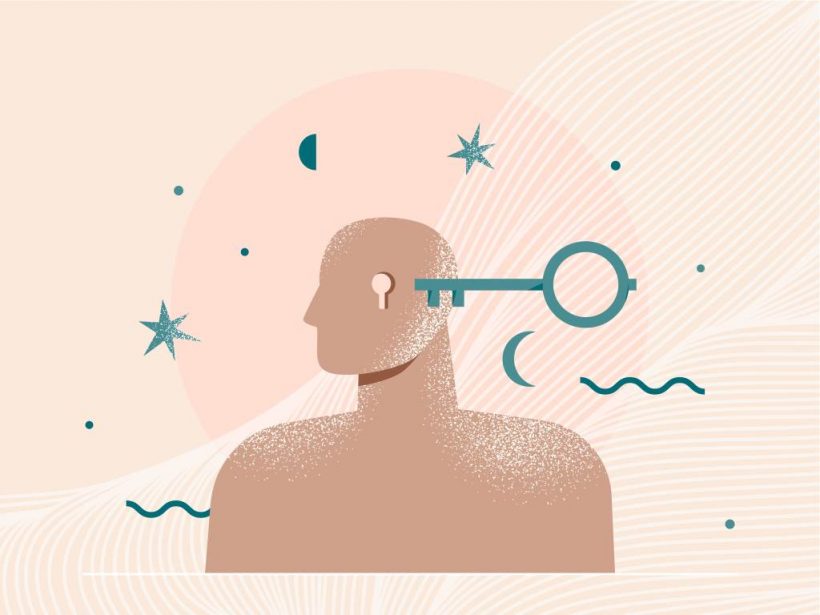
Scientists are beginning to recognize psychedelics as more than a party drug. A push to decriminalize psychedelic medicine recently renewed research interest in the health benefits of hallucinogenic substances. And the push paid off.
Psychedelics have transformed how doctors treat depression with most of the spotlight on psilocybin. It’s been found that a single trip can improve depressive symptoms, including those whose depression has been labeled as treatment-resistant. What’s more, ongoing studies show one mystical experience is enough to keep depression away for up to a year. The drug’s effects boil down to how it revamps the brain.
“Our default mode of thinking typically blocks us from exploring the possibility of change. Psychedelics temporarily bring down our defenses to let us truly feel and process our past and present experiences in new ways,” says David Merrill, MD, PhD, a psychiatrist and the director of the Pacific Neuroscience Institute’s Pacific Brain Health Center in Santa Monica.
Having your brain altered might sound terrifying and it’s one reason psychedelics were taboo for so long. Still, with the proper supervision, micro-dosing on psilocybin and other drugs could help in strengthening our brains and making them more resilient against depression and other health conditions.
You might have heard from anyone who has taken psychedelics that the drug opened up their minds to change. This figure of speech is actually quite literal, says Merrill, since psychedelics are psychologically reorganizing the brain on a neural and cellular level.
The psychedelic experience shakes up the human mind like a snow globe, explains Robin Carhart-Harris, PhD, a psychiatrist and head of the Center for Psychedelic Research at Imperial College London told PBS. Left alone, the snow is laying at the bottom but jiggling it causes things to move around, creating a flurry of randomness. Similarly, psychedelics disrupt your brain and stir up the neural patterns you have cemented in your life.
People feel this shake-up in their minds by experiencing an altered sense of reality. This is likely because hallucinogens target an area involved in creating our conscious experience called the claustrum. The claustrum acts as a communication conductor for the brain, deciding who talks to who. Psychedelics like psilocybin decrease 15 to 30 percent of activity in the claustrum, allowing brain regions to expand their networks to other areas they may not have talked to as much. For example, a single dose of psilocybin strengthened the connections between the prefrontal cortex and brain areas in charge of positive emotions. At the same time, the connections between the prefrontal cortex involved in anxiety and other negative emotions decreased.
This mental effort of metabolizing what we’ve lived through allows for new perspectives to be formed. “This can be transformative even after only 1 or 2 psychedelic experiences,” adds Merrill.
Psilocybin works differently from traditional antidepressants
The gold standard of antidepressants is SSRIs. These increase levels of serotonin, a chemical involved in regulating your mood. Psilocybin also increases serotonin, but it does so by targeting a different receptor in the brain that simultaneously enhances the psychoactive experience. Additionally, a single dose of a psychedelic is enough to see effects. This is faster than antidepressants, which often take several weeks.
Another way hallucinogens work is by disrupting connections often seen in the brains of people with depression. Brain scans reveal psilocybin squashes rigid brain patterns involved in rumination and extreme self-consciousness. Opening up the brain to new thoughts frees up space to have new perspectives and insights on their well-being.
We’re now shifting our view of psychedelics from dangerous to potentially life-saving. But this misunderstood class of drugs has had a troubled history, starting with a demonic plague.
In Medieval Europe, thousands of people suddenly became sick with an unknown illness that would cause burning of the skin, vomiting, seizures, and hallucinations. Known as the Devil’s curse, infected individuals lost entire limbs from losing blood circulation in their arms and legs. No one understood what was causing these illnesses, and eventually, people began blaming women. This spurred witch hunts like the infamous Salem Witch Trial, where countless women were burned or hanged for their alleged crimes. The true culprit, as we came to find hundreds of years later, was none other than moldy bread.
Ergot is a type of fungus whose spore can attack rye crops, replacing healthy grains with infected ones. The fungus contains a number of highly psychoactive ingredients that could poison and make someone look “bewitched” if ingested. Ergotism soon became a thing of the past, with measures now in place to spot and get rid of infected grains. But the fungus itself was still of interest to scientists who wanted to repurpose its hallucinogenic properties for medicine.
In 1938, chemist Albert Hofmann had the idea of using an ingredient in ergot fungus to create a drug that would boost a person’s circulation and respiration. But he made LSD instead. After accidentally ingesting the drug, Hofmann wrote about a mind-altering hallucinogenic trip that changed his perception of reality. This instantly got people’s attention and as scientists poured research into this mind-bending drug, they found it non-addictive and safe to treat several psychological conditions.
Despite the therapeutic potential of psychedelics, there was a growing anti-drug stance brewing as people felt morally panicked at how many youths were using them. With the US criminalizing the possession of psychedelics in 1968 and the growing bias against psychedelics, psychiatrists found it difficult to continue this field of research—until half a century later.
With greater access to the drug, scientists are expanding psychedelic research into other areas of health. Clinical trials are underway to see how hallucinogens help people with cancer. So far, research has found these drugs effective in getting rid of the distress and anxiety associated with a terminal diagnosis. Researchers are also investigating how psychedelic-assisted therapy can help people recover from addictions, including alcohol dependence.
Before you go, check out these mental health apps that can help with managing depression.

Source: Read Full Article







